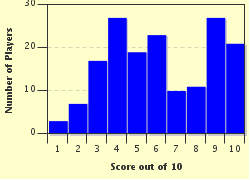Quiz Answer Key and Fun Facts
1. The Shinkansen trains are famous worldwide and, when travelling between Tokyo and Kyoto, will whiz you past a plethora of beautiful sights, including Mount Fuji. What are these trains commonly known as?
2. Akihabara is one of the many districts of Tokyo and, like most Tokyo districts, has a distinct character. What is Akihabara most associated with?
3. Upon the completion of this 2,000 ft broadcasting tower in 2010, it was the tallest tower in the world. By what name is it commonly known?
4. This wall of sake barrels forms part of the Meiji Shrine, dedicated to Emperor Meiji. Which geographic district, famous for its eccentric teenage fashion, is located next to the Meiji Shrine?
5. Some believe they're semi-divine, graceful, and...oh. This panda was kind enough to pose for me in Japan's oldest zoo, located in Taito, Tokyo. What is the name of this zoo?
6. Outside the magnificent Todai-ji Buddhist temple complex, sika deer roam freely and may be fed by visitors. In which city, Japan's ancient capital, is this temple located?
7. Contemporary art can be found all over this small island found off the south coast of Honshu, as can several art museums which exhibit work by artists including Claude Monet. What is the name of this island?
8. Which of these rivers, that is a popular walking area for tourists and locals, is located in Kyoto?
9. The hillside temple of Kiyomizu-dera was founded in the 8th century, and is now a UNESCO World Heritage Site. Where in Japan can it be found?
10. The eye-catching Kinkaku-ji in Kyoto was once the home of a retired Shogun, but has since become a Zen temple. What name is it also known by?
Source: Author
doublemm
This quiz was reviewed by FunTrivia editor
Pagiedamon before going online.
Any errors found in FunTrivia content are routinely corrected through our feedback system.
